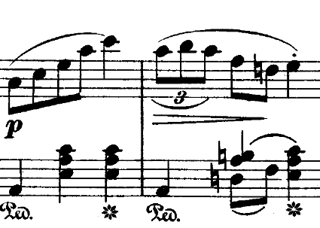I was wondering about triplets : when and where were they used for the first time in scores? More generally, when were triplets used significantly (i.e. not one single time on one particular score, but used several times by many composers)?
As an example for what I'm looking for, here is an appearance of a triplet in the Grande valse brillante in E-flat major, Op. 18, composed by Frédéric Chopin:
According to Oxford Music Online, « the slur and figure used in this way do occur in the 16th century, but were not common until the 19th ». I've never seen a baroque piece using triplets (I don't know many compositions from this epoque, though). On the contrary, tuplets are more frequet in Chopin's works, for instance.
I'm interested in any relevant piece of information. Thank you in advance!




